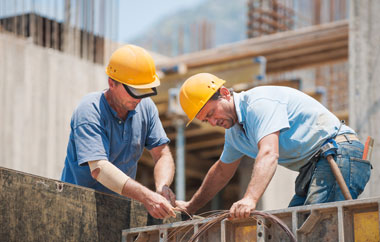Ever walked into a historic building and noticed cracks in the walls or rusting beams tarnishing its grandeur? These signs of wear and age underscore the urgent need for structural restoration. This essential process ensures buildings remain safe, functional, and as visually stunning as they were meant to be.
Structural restoration involves repairing and reinforcing a building’s structural elements to restore them to their original condition or enhance their strength and stability. This process addresses issues like cracks, corrosion, water damage, and other forms of deterioration that can compromise a building’s integrity. Structural restoration goes beyond fixing what’s broken—it’s about improving the durability and safety of the entire structure.
Ensuring Safety
Maintaining a building’s integrity is imperative for several reasons. First and foremost, it ensures the safety of its occupants by addressing potential hazards that could lead to accidents or structural failures. Regular inspections and timely restorations can prevent minor issues from becoming major problems, thereby safeguarding lives.
Preserving Property Value
Structural restoration also helps preserve the value of the property. Buildings that are well-maintained and structurally sound are more appealing to potential buyers or tenants. This is important for commercial properties, where the condition of the building can significantly impact business operations and profitability.
Protecting Historical and Cultural Heritage
Structural restoration plays a key role in preserving historical and cultural heritage. Many older buildings have architectural and historical significance, and restoring these structures helps retain their original beauty and historical value. This practice honors the past while providing safe and functional spaces for the future.
Common Structural Issues and Restoration Techniques
- Cracks and Foundation Issues: Cracks and foundation issues are common signs of structural problems. These can be caused by factors like the settling of the building, temperature changes, and moisture infiltration. Restoration techniques for cracks often involve sealing them with specialized materials and reinforcing the affected areas to prevent further movement. Foundation issues, such as settling or shifting, may require underpinning, which strengthens the foundation by extending it to more stable soil or rock layers or installing piers or pilings to support the building.
- Corrosion and Water Damage: Corrosion and water damage to steel, concrete, or wood can severely weaken a building’s structure. Rust and rot can compromise beams, columns, and other critical elements. Restoration typically involves removing damaged materials, treating affected areas to prevent further corrosion or decay, and replacing or reinforcing the structural elements.
- Masonry Deterioration: Older buildings with brick or stone masonry can experience deterioration due to weathering, pollution, and natural wear and tear. Masonry restoration involves cleaning surfaces, repointing mortar joints, and replacing damaged bricks or stones. This process restores structural integrity while also enhancing the building’s aesthetic appeal.
The Structural Restoration Process
- Assessment and Planning: The first step in any structural restoration project is a thorough assessment of the building’s condition. This involves inspecting the structure, identifying issues, and determining the underlying causes of the problems. Based on this assessment, a detailed restoration plan is developed, outlining necessary repairs and reinforcement measures.
- Execution of Repairs: Once the plan is in place, skilled professionals execute the restoration work using specialized techniques and materials. This phase may involve a combination of structural repairs, such as crack sealing, corrosion treatment, and foundation reinforcement, as well as cosmetic repairs to restore the building’s appearance.
- Quality Control and Maintenance: After the restoration work is completed, quality control checks ensure all repairs have been carried out correctly and that the building meets safety standards. Regular maintenance and inspections are indispensable to keep the structure in good condition and to address any new issues that may arise.
Benefits of Structural Restoration
- Improved Energy Efficiency: Structural restoration offers numerous benefits beyond safety and aesthetics. A restored building is more energy-efficient, as repairing cracks and other issues can improve insulation and reduce energy consumption.
- Enhanced Functionality: Restoration enhances the building’s functionality, making it more comfortable and convenient for occupants. This can lead to improved satisfaction among tenants or users of the building.
- Long-term Cost Savings: By extending the building’s lifespan, structural restoration provides long-term cost savings by reducing the need for frequent repairs and major renovations. Investing in restoration now can prevent costly problems in the future.
Preserve Your Building’s Integrity with Biller Reinhart Engineering Group
Is your building showing signs of deterioration? Partner with Biller Reinhart Engineering Group for expert structural restoration services. Our team specializes in restoring and renovating buildings affected by coastal conditions, moisture intrusion, fire, and more.
We provide comprehensive solutions from initial surveys and assessments to construction phase services and project close-out. With a portfolio of successful restorations, including commercial structures, historic buildings, and more, we ensure your property remains safe, durable, and functional.
Contact us today at 855-482-7655 or email info@billereinhart.com to schedule a consultation. Visit our website to learn more about our services and how we can help preserve your building’s integrity for years to come. Let Biller Reinhart’s expertise give you peace of mind.

